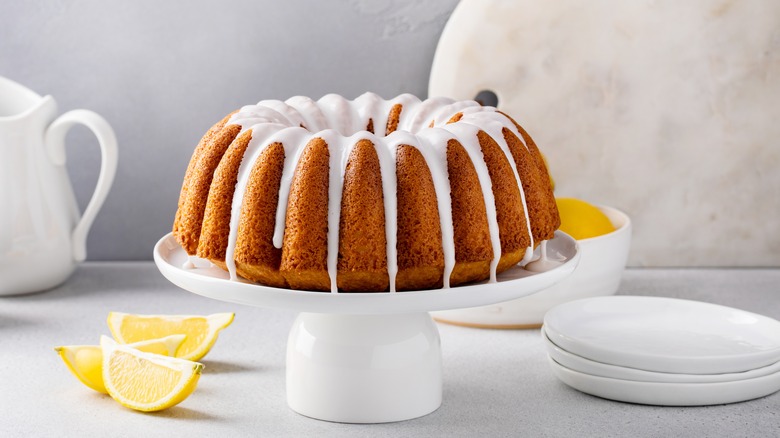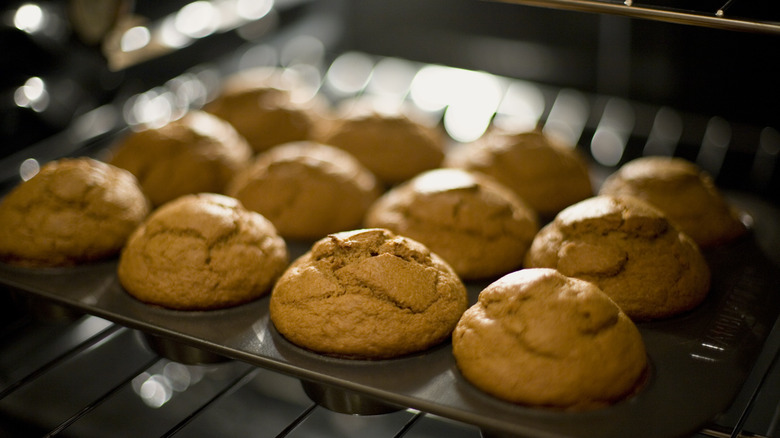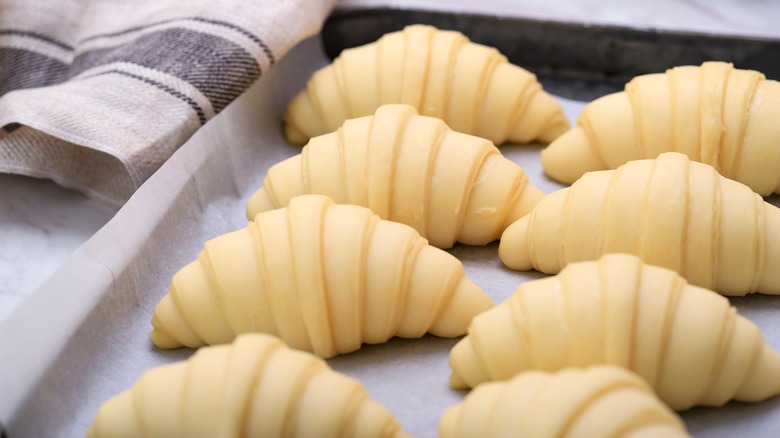Why You Shouldn't Use Your Oven's Convection Setting For Baking
If you find yourself in a conversation about ovens, you'll likely find that most people have an opinion about gas versus electric, the positioning of oven racks, and the list goes on. But does your oven have a convection setting? Have you ever wondered what it's good for, and can you use it to bake anything, even homemade carrot cake or blueberry bread?
While convection ovens can be a bit of an anomaly, home kitchen appliances that have the setting can be extremely useful for providing a caramelized, browned exterior when used to cook foods like tender fish or roast duck. When baking, however, you'll want to avoid using your convection oven setting, since it creates a drier environment with less humidity, depleting necessary moisture, which helps give literal rise to most of your greatest baking feats.
While standard ovens rely on a heat source (or two) to bake food, convection ovens also use fans and exhaust mechanisms to circulate the heat, which results in a more even, quicker oven cooking experience when it comes to roasted veggies, baked tofu with a crunchy exterior, or moist jerk chicken thighs with a crispy layer of skin. Unfortunately, in most home kitchen ovens, though, this flow of hot, dry air interferes with leavening and expansion key to achieving moist, fluffy, and soft bakes.
Conventional ovens help bakes rise
It's true convection baking creates an even cook, and is time and energy-efficient, reducing cooking by up to a quarter of the time, according to the Kitchn. When applied to making your grandmother's classic banana bread, however, convection baking may cause flat or uneven surfaces that are overly crunchy and browned. Since the exhaust function in convection baking withdraws moisture from the oven over the course of a bake, the batter won't get as much humidity as in a standard oven, where it's needed for the expansion and rise of batter and dough matrices, according to Bakerpedia.
Some may try convection baking due to the even heat distribution it provides, which can help with ovens that have hot spots. However, this even baking benefit is outweighed since the hot dry air can cause the exterior to harden and form a crust too quickly before a cake or cookie has had a chance to expand. This can mean stunted cakes, with bumpy, sunken edges or dried-out tops. So, it's best to stick with a standard oven setting, rotating baking pans as needed to ensure an even golden bake.
King Arthur Baking explains that in bread baking, steam, and humidity are especially important to result in a desired open, fluffy crumb structure. Using convection settings while baking leads to dense, chewy bread and rolls. Luckily, traditional bread-baking recipes rely on other methods to release steam while using a standard oven setting, like scoring the bread when baking a hearty sourdough or French bread loaf.
Convection baking exceptions
As a general rule of thumb, it's best to use standard oven settings, without all the extra ventilation, for baking most sweets and baked treats. Stick to convection baking for savory casseroles wrapped in foil like pasta bakes, or crisp pan-roasted veggies and proteins. However, there are some cases where convection baking could come in handy.
Specifically, many professional bake shops use convection ovens to make large quantities of laminated pastries (where butter is layered between the dough) or pie crusts. This can help cold fat melt quickly to develop flaky, light croissants, instead of slowly melting and leaking fat, which can happen in standard ovens. If you do choose to bake a pie under convection oven settings, cover the pie in foil for the majority of the bake to make sure moisture is retained.
If you're baking thin, crispy chocolate chip cookies or biscotti that don't need much rise, baking with convection could be your friend too. This is also especially efficient if you're baking multiple batches for a crowd and want to make the most of your oven space without having to constantly rotate each cookie tray. Just bake at 25 degrees lower than directed in your recipe, since the cookies will bake quickly. It requires some adjustments, but the convection setting can be useful for a few specific applications.


